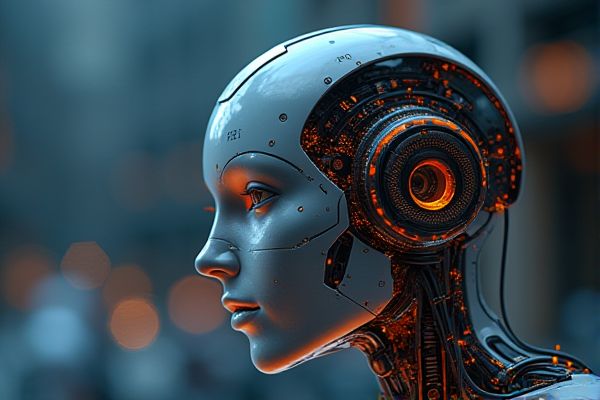
AI in photo editing transforms images with efficiency and precision. It enables automatic adjustments to lighting, color balance, and sharpness, enhancing the overall quality without the need for extensive manual intervention. Features such as background removal and object recognition streamline complex editing tasks, saving both time and effort for photographers. Machine learning algorithms continuously improve their capabilities, making photo editing accessible to both professionals and novices.
AI usage in photo editing
Automated Retouching
AI usage in photo editing has the potential to greatly enhance efficiency and precision. Automated retouching tools can significantly reduce the time needed to achieve professional-quality images, benefiting photographers and designers alike. For instance, software like Adobe Photoshop utilizes AI algorithms to streamline the editing process, allowing for quick adjustments to lighting and color. The possibility of achieving consistent results with less manual effort presents a compelling advantage for creative professionals.
Object Removal
AI technology in photo editing allows for precise object removal, significantly enhancing image quality. Tools like Adobe Photoshop have integrated AI features to streamline this process, making it accessible to both amateurs and professionals. The chance of achieving seamless edits increases with these advancements, reducing the time spent on manual corrections. By leveraging AI, users can focus more on creativity and less on technical challenges, potentially improving overall productivity.
Image Enhancement
AI technology in photo editing offers significant advantages in image enhancement. Tools like Adobe Photoshop now incorporate AI features to automatically adjust lighting, color balance, and sharpness, enhancing overall image quality. The likelihood of producing professional-level edits increases with the use of AI, saving both time and effort for photographers. With platforms such as Luminar, users can explore creative possibilities that were previously complex and time-consuming.
Background Replacement
AI usage in photo editing allows for more efficient background replacement, enhancing creativity and productivity. Tools like Adobe Photoshop utilize machine learning algorithms to automatically detect and isolate subjects from their backgrounds. This technology increases the likelihood of achieving professional results with minimal effort and time. Users can experiment with various settings and styles, opening up opportunities for unique artistic expressions.
Style Transfer
AI usage in photo editing, particularly in style transfer, offers new creative opportunities. This technique allows artists to apply the characteristics of one image, like Van Gogh's painting style, to their photographs. The potential for unique visual interpretations enhances the appeal of personalized art. With advancements in software capabilities, such as Adobe Photoshop, users can explore these innovative tools to transform their images.
Color Correction
AI technology in photo editing enhances color correction by automating the process and providing precise adjustments. Users can quickly improve image quality by utilizing AI tools, which analyze and optimize color balance and saturation. For instance, Adobe Photoshop incorporates AI features that offer intelligent color enhancements to streamline workflows. This advancement presents an opportunity for photographers and graphic designers to achieve professional results with reduced effort and time.
Face Recognition
AI usage in photo editing offers the advantage of automating complex tasks, such as color correction and object removal, enhancing overall efficiency. In face recognition, AI algorithms can improve accuracy in identifying individuals, which is beneficial for security systems in institutions like airports. The potential to streamline workflows can lead to time savings and improved quality in visual content. As AI technology continues to advance, the possibilities for integrating these tools in various applications grow significantly.
Noise Reduction
AI usage in photo editing can significantly enhance the noise reduction process, making images clearer and more professional. For instance, software like Adobe Photoshop incorporates AI algorithms that intelligently identify and minimize noise without compromising image detail. This capability allows photographers to produce high-quality images even in challenging lighting conditions, increasing their chances of client satisfaction. The advantage lies in the efficiency and quality improvements that AI brings to traditional editing workflows.
Image Restoration
AI can enhance photo editing by automating adjustments such as color correction and noise reduction. This technology also offers benefits in image restoration, allowing for the recovery of damaged photographs with impressive accuracy. Tools like Adobe Photoshop increasingly incorporate AI features, providing users with advanced options to refine their images. The potential for improving visual content quality presents significant advantages for professionals in creative industries, including photography and graphic design.
Smart Cropping
Smart cropping techniques in AI-driven photo editing can enhance images by automatically determining the most visually appealing sections to retain. This process leverages algorithms that analyze composition and elements within the frame, potentially improving the overall impact of the photograph. By integrating solutions like Adobe Photoshop's AI tools, photographers may save time and achieve better results without extensive manual adjustments. The possibility of improving creative outcomes while streamlining workflows presents a clear advantage for both amateur and professional editors.
 techknowy.com
techknowy.com